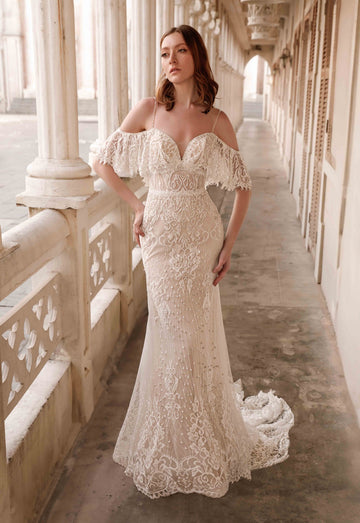The Evolution of Bridal Attire in Multicultural Societies
The Evolution of Bridal Attire in Multicultural Societies
Bridal attire has undergone significant transformations throughout history, influenced by various cultural, social, and religious factors. In multicultural societies, where diverse traditions intersect, the evolution of bridal attire reflects a fascinating blend of customs, colors, and styles. This article explores the development of bridal wear across different cultures, focusing on key influences and contemporary trends.
The Historical Significance of Bridal Attire
Bridal attire is more than just clothing; it embodies cultural heritage and personal identity. Historically, many cultures had specific colors and styles designated for brides. For instance, in Western traditions, brides traditionally wore white, symbolizing purity and innocence, a practice popularized by Queen Victoria in the 19th century. In contrast, many Eastern cultures embrace vibrant colors; red, for instance, is a symbol of prosperity and happiness in Chinese weddings.
| Cultural Attire and Symbolism | Region | Common Colors |
| Wedding gowns | Western cultures | White, ivory |
| Qipao or Cheongsam | Chinese culture | Red, gold |
| Sari | Indian culture | Red, green, gold |
| Kimono | Japanese culture | Red, white |
Bridal Attire in Different Cultures
Western Bridal Attire
In Western societies, the tradition of wearing white for weddings has solidified its place in modern culture. However, styles have evolved over time. The classic Victorian gown has transformed into various contemporary designs, embracing modern fabrics and cuts. Today, brides may opt for anything from lace sleeves to minimalist silk dresses, accessorized with veils or floral crowns. The evolution continues with colored gowns becoming increasingly popular, allowing brides to express individuality.
Bridal Attire in Asian Cultures
Asian bridal attire is rich in symbolism and diversity. For example, in Indian weddings, the bride often wears a saree or lehenga, adorned with intricate embroidery and embellishments. The choice of color holds significant meaning. Each color conveys a different sentiment, and the traditional attire varies widely from region to region. Chinese brides usually wear a qipao or cheongsam, often in red, combining elegance with tradition, an attire typically embroidered with dragons or phoenixes to symbolize good fortune.

Middle Eastern Bridal Attire
In Middle Eastern regions, bridal attire typically features elaborate designs that showcase cultural heritage. Traditional bridal gowns may vary widely, influenced by local customs and practices. Brides in countries like Lebanon may wear luxurious dresses designed by renowned fashion houses, characterized by intricate detailing and embellishments. Conversely, in Saudi Arabia, a bride may don a misheba, encompassing her fully in a beautiful gown paired with a niqab, respecting local customs and traditions.
Modern Trends and Influences
With the rise of globalization, the blending of cultures has significantly influenced bridal attire worldwide. Modern brides often embrace hybrid styles, integrating elements from multiple cultures. For instance, a bride may wear a traditional lace Western gown while incorporating a sari dupatta, representing her Indian heritage.
The influence of social media and celebrity culture has also shifted bridal trends. Influencers and public figures showcase their weddings through platforms like Instagram, leading to a surge in preferences for unique and custom designs. Modern bridal fashion trends, such as minimalist aesthetics and modern bohemian styles, have gained traction, inviting brides to explore diverse forms of self-expression on their special day.
Conclusion
The evolution of bridal attire in multicultural societies is a testament to humanity's rich tapestry of traditions, values, and innovations. As cultures continue to intermingle and influence each other, bridal wear will undoubtedly reflect this blend, establishing new norms while preserving age-old customs. Brides today have the unique opportunity to curate their ensembles by selecting elements that honor their heritage while expressing their individuality. Whether you are considering a traditional gown or a modern hybrid look, embrace the beauty of diversity in bridal attire. Remember, the most important aspect of any wedding attire is that it resonates with your personal story and cultural significance.
Suggestions: When choosing your bridal attire, consider your cultural background, personal style, and the message you wish to convey. Explore various designs and consult with designers who understand multicultural influences to create a unique blend that truly represents you on your special day.
